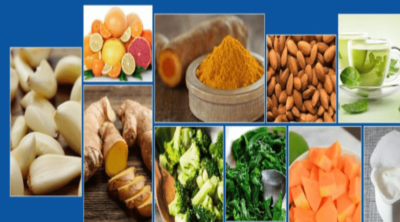
Cooking flavorful quinoa flakes can be completed within a few minutes. Commercially prepared by steam-rolling of the whole grains, these grain flakes are as nutritious as quinoa grains.
People who adopt healthy eating with lots of grains and fiber rich foods are already aware about the rich nutrition of quinoa. The only concern with loose quinoa grains is cooking them, which requires prior soaking or repeated rinsing to remove saponin. What if you get to enjoy all the nutrients by simple cooking of quinoa products, without soaking or thorough rinsing? Yes, with quinoa flakes, you just need to wash them briefly before cooking them on the stove top or microwave.
What are Quinoa Flakes?
The demand for quinoa products in the market has been increased significantly in the last few years. Actual production of quinoa flakes is done by rinsing whole grains to get rid of bitter tasting saponin, and then steam-rolling them. Other than washing, no processing step is involved in the preparation of quinoa flakes. Thus, they retain all the essential nutrients present in the quinoa grains. To be more precise, you can expect the same nutritional values of quinoa grains.
Quinoa flakes are excellent alternatives for those who are fond of serving healthy quinoa recipes in breakfast, but are reluctant to cook whole grains. They can be prepared within no time, which is not so with the whole grains. At the first glance, they look identical to rolled oats. These flakes are flavorful and many dieters use them as a substitute for oatmeal in the breakfast menu and also, in baking recipes. So, you can incorporate this quinoa product to create variety in the gluten-free breakfast menu.
Quinoa Flake Nutrition
When compared to other cereal grains, quinoa contains the highest amount of complete proteins. On an average, the protein content in quinoa grains accounts to 16%. Believe it or not, some species of this superfood contain approximately 20% proteins, which is indeed very high for cereals. What is more special with proteins isolated from quinoa is, presence of lysine, cystine, methionine and other essential amino acids in a balanced ratio. Compared to wheat flakes, quinoa flakes are free of gluten.
Similar to quinoa grains, these grain flakes serve as excellent food sources for vitamin E, carbohydrates, dietary fiber, phosphorous, magnesium, iron, calcium, zinc and potassium. They contain no cholesterol, no saturated fats and negligible sodium. Cooking ⅓ cup of quinoa flakes is sufficient for one serving, and the same yields 131 calories. The carbohydrate present in quinoa is of a complex type, meaning it is digested very slowly for providing energy.
How to Prepare Quinoa Flakes?
As aforementioned, quinoa flakes are easier to cook than the grains. They can be prepared directly without the pre-soaking step, and cooking time lasts for a few minutes (not more than that). The basic method for cooking these flakes on the stove top is very easy. All you need to do is, pour 1 cup of water in a cooking pot or regular saucepan. Warm it over the stove top on medium high heat setting. As the water starts boiling, add ⅓ cup quinoa flakes and cook for 1½ minutes.
When cooking quinoa flakes in the oven, add the same amounts of water and grain flakes (1 cup water and ⅓ cup grain flakes) in a large microwave safe bowl. For serving it children, use milk instead of water for cooking. Cook on high setting for 2½ minutes, or until the mixture thickens. Remove from oven, allow to cool down for 4-5 minutes and top it with seasonal fruits. Or else, you can stir in 1 tablespoon of brown sugar (or maple sugar) for sweetening, again drench with milk and serve. Learn more on how to use quinoa.
So, try varied recipes using quinoa flakes to start your day with a filling, healthy breakfast. They are safe for feeding infants who are aged above 8 months old. What about using these grain flakes in pancakes, muffins and waffles? You can substitute them in any recipe that calls for grain flakes, and replacing refined flour with quinoa flakes in baked goodies is a simple way to improve their nutrition.

